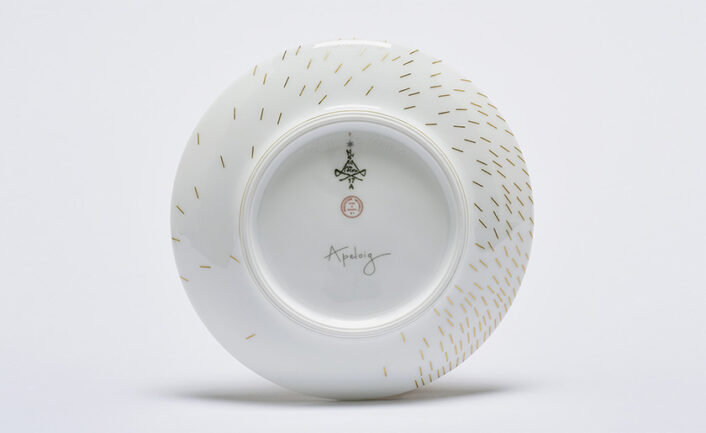Design
Richard Ginori
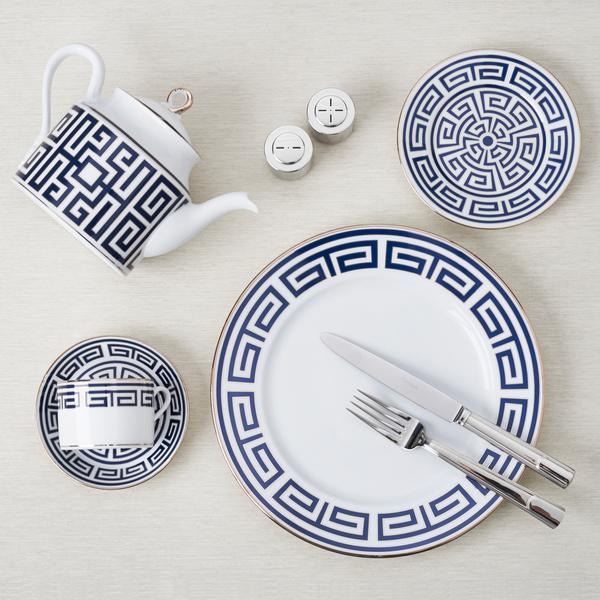
The Labirinto Zaffiro Collection in cobalt blue.
This geometric-inspired collection is a labyrinth is based on strict and precise determined lines. The original neoclassic design comes from a draft made by Gio Ponti who was Richard Ginori’s chief designer for many years. The “Labirinto” collection is produced with polished gold and available in four colors: classic black, ruby red, cobalt blue, or amethyst.
Image courtesy of: Artedona
The history of Richard Ginori began in 1735 in the small village of Doccia, just down the road from Florence, Italy. Marquis Carlo Andrea Ginori was inspired by his passion for white gold; in order to satisfy his desires, he started a porcelain factory. This dream turned into a worldwide icon of style… one which has been the same for the past 285 years and counting!
The eighteenth-century was a vital time for porcelain development in Europe; new styles and trends made way for a plethora of first manufactures. The factory in Doccia led Ginori to have space for creative freedom… all the while adding the elements of ancient traditions to modern-day influences.
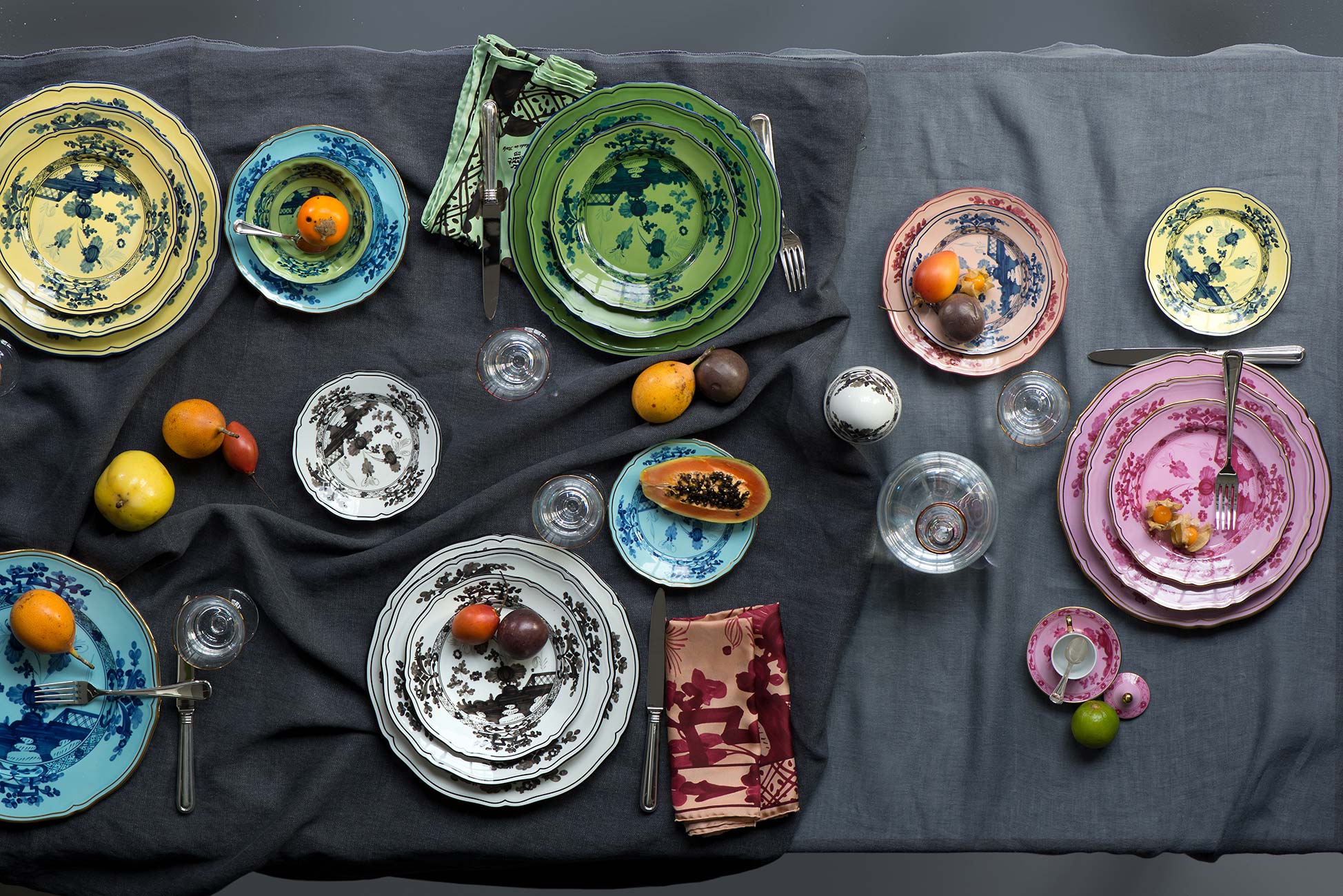
A beautiful assortment of Richard Ginori china, Gio Ponti’s 1926 interpretation of a Chinoiserie-embellished pieces in the traditional Florentine style.
Image courtesy of: Bebe’s
Towards the end of the nineteenth-century, the Manifattura (the factory) expands and Richard Ginori Ceramic Company is born. Soon after, the tradition of master craftsmen meets new technologies and as a result, new styles are perfected thanks to the use of patents.
The company remained family-owned until 1896 when it merged with the Societa Ceramic Richard of Milan becoming Richard Ginori. The company thrived for many years and continued to produce handcrafted products for palazzos, luxury liners, villas, and the Vatican. Richard Ginori also collaborated with artist such as Gio Ponti and Paola Navone… however, by 2013, they were forced to file for bankruptcy.
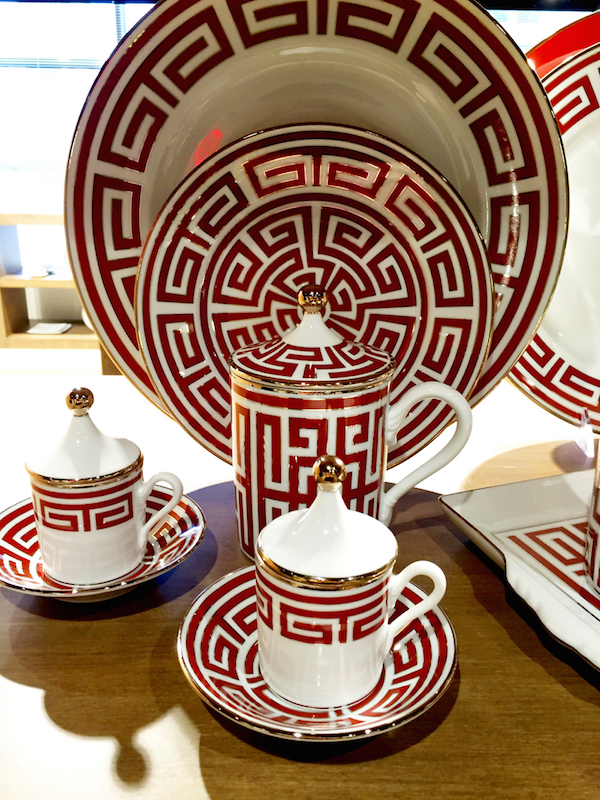
Labirinto Zaffiro in ruby red.
Image courtesy of: Quintessence Blog, photographed by: Alessandro Moggi
Following their 2013 bankruptcy filing, Manifattura Richard Ginori was acquired by Gucci. Artistic direction was given to Alessandro Michele, Gucci’s future artistic director. Three years later, Richard Ginori went under the direct coordination of the Kering Group; creative direction was entrusted to a team of designers under Michele’s leadership. At that time, Michele began selectively pulling unique designs from Ginori’s archives and reinterpreting them for today’s modern living.
Michele has slowly revived the storied china brand. He slowly reintroduced several archival Gio Ponti designs such as the graphic Catene and Labirinto with his stylized spin and geometric classicism.
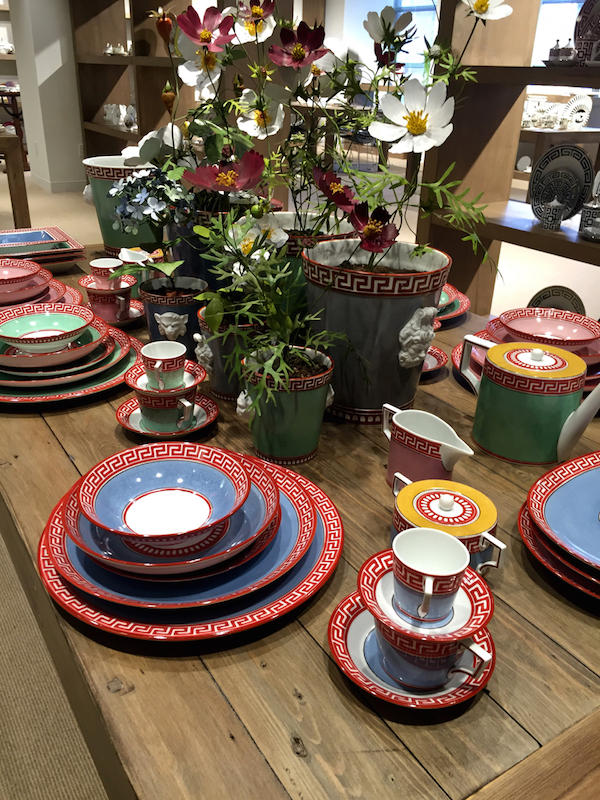
While Michele has worked his own magic on Ginori, he looks into the future with his appreciation of Old World craftsmanship, brand heritage, and artistic values.
Image courtesy of: Quintessence Blog, photographed by: Alessandro Moggi
Michele has been instrumental in bringing Ginori to the present; for example, his creation of the Giardino de Simplify is quite literally fabulous! This collection happened by chance… using a Greek Key motif from a little 19th-century cachepot that was found in the factory. This simple motif was expanded into an entire tableware collection. From the bold lines and colors, the past is beautifully translated into an authentic and new design.
From the pieces that have come forth during the past few years, it is clear that Michelle is ALL about the details… both big and small… and that his unique touches have reimagined and revitalized a historic brand.
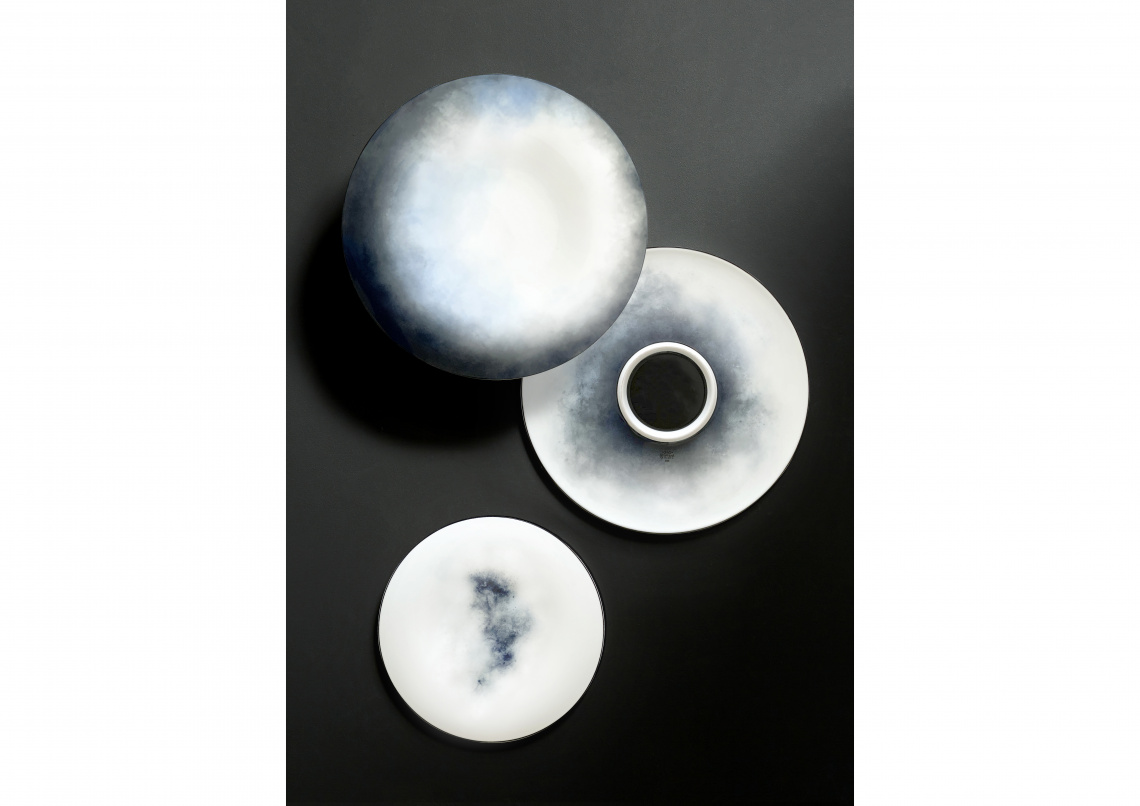
From the Ether Collection, part of the bigger Aria Collection.
Constance Guisset, Ether’s designer said, “To create Éther for Richard Ginori has been like creating the set for a ballet. It is the set I have imagined for the pieces of the Aria collection. The movement of the graphic design seems to evaporate in a weave of lights and shadows that makes the plates into a frame on which chefs can act creatively.”
Image courtesy of: Constance Guisset Studio
Earlier this year, Richard Ginori introduced a brand-new collection, “Cosmogony.” Earth’s four elements are what all substances are derived from and what matters comes from. In such, WATER is the source of life that knows no obstacles and is forever adapting without ever changing. EARTH is solid, it embraces and nourishes life. AIR is untouchable and vital energy, it is the element that life is impossible without. And finally, FIRE is the purifying element from which life arises.
A further explaination is that WATER is shown as a design of waves in varying colors of blue; this element compliments EARTH that is portrayed as a “Zen garden”-inspired table that is peppered with sand and traces of a metal rake designs. These two separate elements merge in FIRE which is expressed in shades of red and flanked by tall structures leading upward towards AIR which is evoked by metallic windmills.
Full circle!
